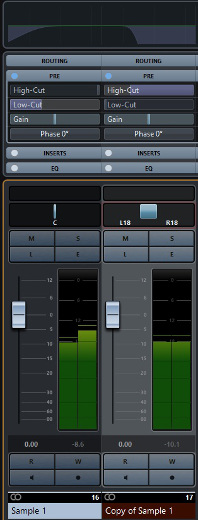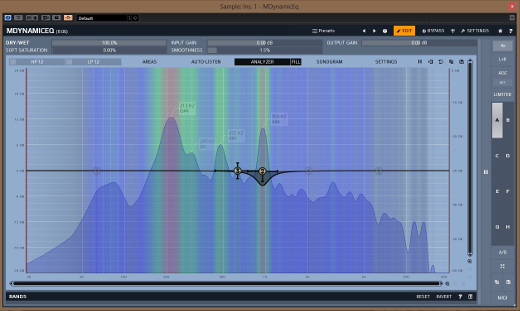Max Out Your Mix: 3 Essential Tips For Mixing with Samples
Sampling is amazing for making songs sound huge: you’re taking parts of an already mixed and mastered song and putting it into your own.
From a production standpoint it opens up a world of possibilities, but from a mixing standpoint it can open up a can of worms. Here are some ideas for getting that big sound to fit into your mix.
1. Filter:
There’s only so much room in a mix, so in order to leave space for 808’s and kicks, filter out the bottom of the samples.
This is a good way to get rid of record rumble and competing basslines, but make sure to leave in anything crucial to the song. Also be careful not to filter too high and detach your sample from the rest of the song. Some of that bottom end is glue, so take out just enough for clarity.
Try different filter slopes for different effect; a shallower slope will require a higher cutoff frequency but will give you more of that glue.
2. EQ:
When it comes to the higher end of the spectrum, obviously you won’t want to remove things completely.
A parametric EQ is great for notching out offending frequencies, but if you’ve got a huge sample, a wide band is good for making space. If you hear parts of the sample masking other elements of the mix (especially the vocal) a shallow dip with a wide band will let other sounds in that frequency range to shine through.
If you love the full sound of the sample but it clashes at times with certain sounds you could automate an EQ band, or if you’ve got a dynamic EQ with a side chain this is a perfect use for it. If you’ve got a horn sample that clashes with a synth line that appears occasionally, send that synth to the sidechain input and duck that frequency in the horns when needed.
3. Split The Bass:
If the actual bass line of the song is in the sample, you may want to deal with it separately.

The copy of the sample has been narrowed in the stereo field and low pass filtered heavily to leave a solid low end to work with.
Duplicate the sample track in your DAW, and use a low-pass filter to take out all of the top end above your bass. Now you can effect your bass with a lot more freedom. For phase reasons, you’ll likely want to filter the some lows out of the main sample track.
This is also useful if you’ve got a sample from the early days of stereo when they’d pan bass hard to one side. For modern music you’re going to want to make these mono while leaving the higher frequencies stereo. You could use a multiband stereo manipulation plugin for this, but you’d still be limited in your processing going forward.
These are just a few techniques for keeping those big samples sounding big, and of course your needs will vary depending on the sample, so as always use your ears first!
Bonus Tip:
You don’t have to remove ALL the record noise on samples, that’s part of the sound! If it’s really bad and distracting then do what you can, but in general that’s part of the fun of sampling vinyl.
Paul “Willie Green” Womack is a Producer/Engineer based in Brooklyn, NY. Working primarily in Hip-Hop, R&B and Gospel, his credits feature artists like Donnie McClurkin, Wiz Khalifa, Open Mike Eagle, Billy Woods and many more.
Please note: When you buy products through links on this page, we may earn an affiliate commission.








Pieter Schlosser
March 3, 2015 at 1:44 pm (10 years ago)Love this! Some really excellent tips in here. Thanks Willie